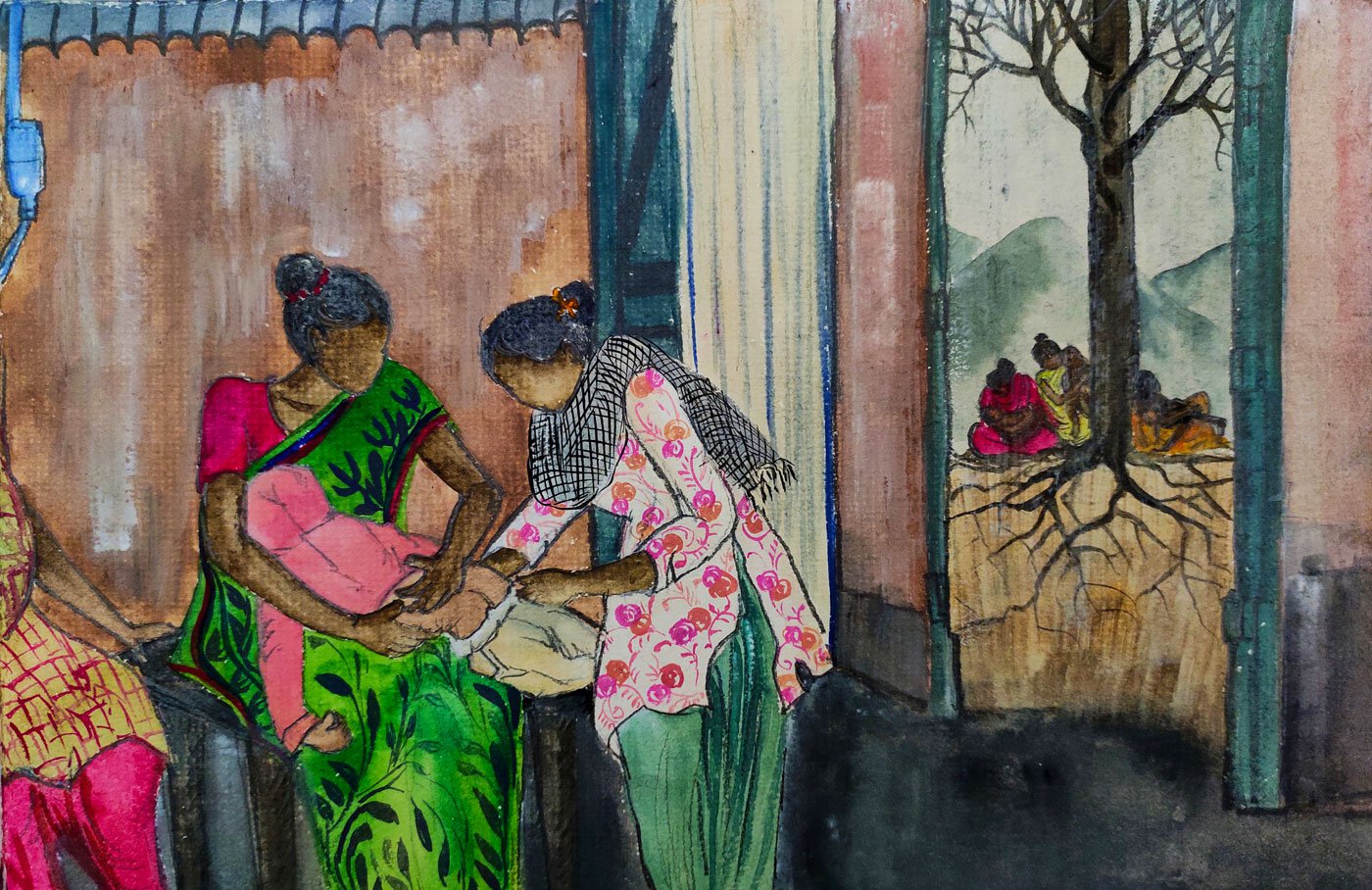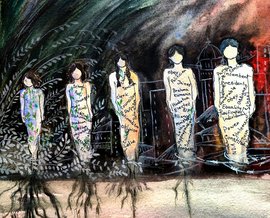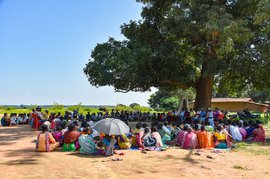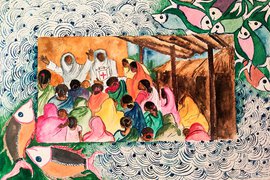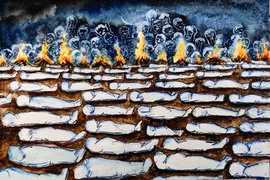She rummages through her bag for a rapid malaria test kit. The bag is stuffed with medicines, saline bottles, iron supplements, injections, a BP measuring machine and more. The woman whose family had been trying to reach her for two days is lying listless on the bed, her temperature raging. The test comes positive.
She digs into her bag once again, this time for a bottle of intravenous (IV) solution – 500 ml of dextrose saline. Hopping on to the woman’s bed, she manoeuvres a plastic rope around a beam running across the roof, and ties the IV bottle to it with impressive swiftness.
Jyoti Prabha Kispotta, 35, who has been offering medical services in villages in and around Jharkhand’s Pashchimi Singhbhum district for the past 10 years, is neither a qualified doctor nor a trained nurse. She is not associated with any government hospital or healthcare centre. But this young woman from the Oraon tribe is the first recourse, and too often, the last hope of people in the predominantly Adivasi villages of Pashchimi Singhbhum that are plagued by an apology of a public health system.
She is one of the many ‘RMPs’ who, regional surveys indicate, make up over 70 per cent of healthcare providers in rural India. RMP here is not a Registered Medical Practitioner, as one would assume, but a rather misleading acronym for Rural Medical Practitioner, derisively known as jhola chhaap (quack) doctors. Running a parallel private healthcare service in rural India, these unqualified medical practitioners are looked down upon with scorn as ‘quacks’ in academic literature, and with greater ambivalence in government policies on healthcare.
RMPs are often unregistered with any of the recognised medical councils in India. Some of them may be registered as homeopaths or Unani doctors, but practice or dispense allopathic medicines.
Jyoti has an RMP certificate in allopathic medicine from a private institute called Council of Unemployed Rural Medical Practitioners that claimed to have been registered by the Government of Bihar. She did a six-month-course there, paying Rs. 10,000. The institute does not exist anymore.
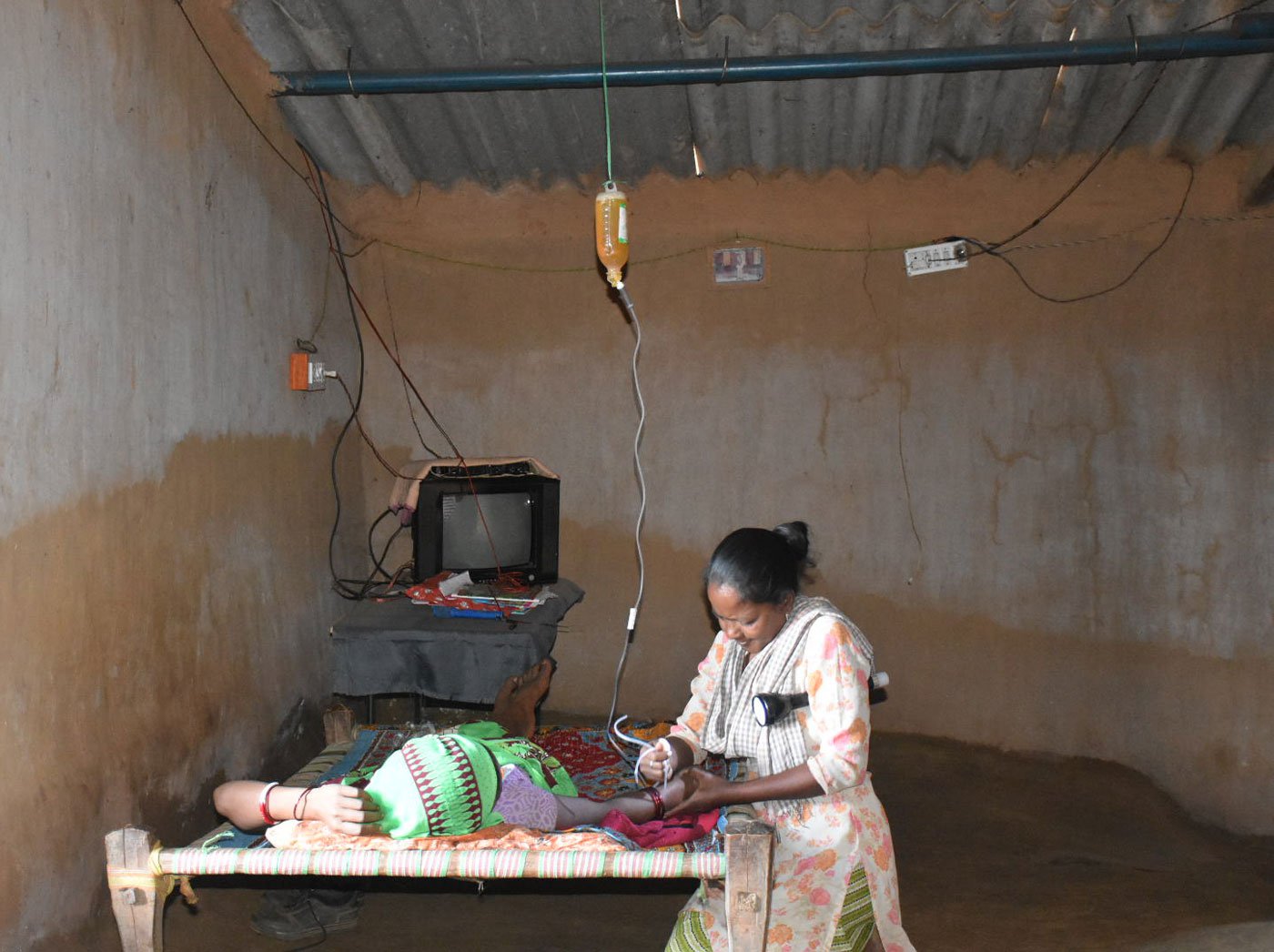
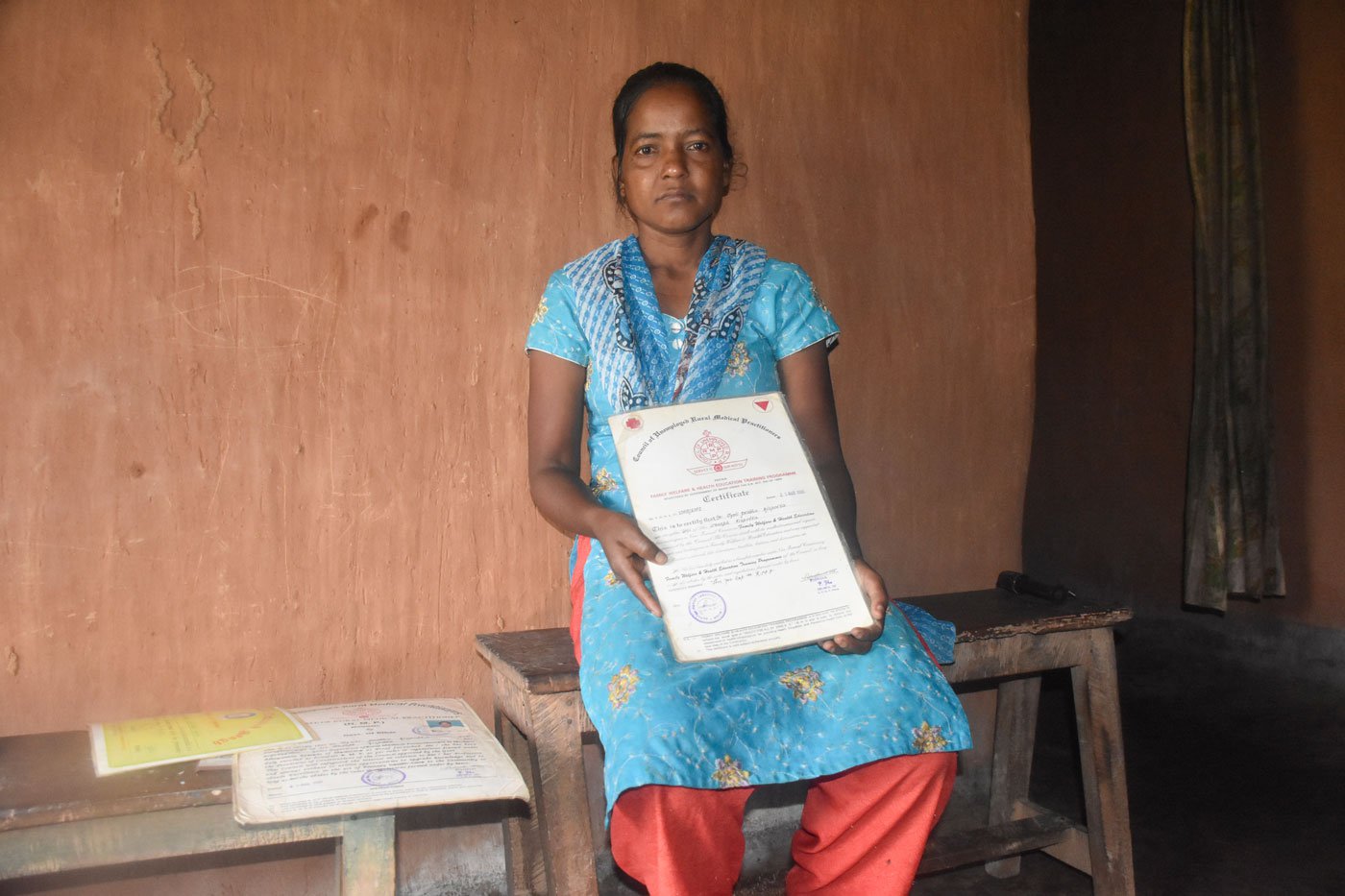
Left: Jyoti Prabha Kispotta administering dextrose saline to a woman with malaria in Borotika village of Pashchimi Singhbhum. Right: Jyoti with a certificate of Family Welfare and Health Education Training Programme, awarded to her by the Council of Unemployed Rural Medical Practitioners
*****
Jyoti waits until the IV bottle is empty before handing over some medicines with instructions to the patient’s friend. We walk back to her bike, parked some 20 minutes away because of bad roads.
Pashchimi Singhbhum district is rich in minerals but poor in infrastructure and access to basic facilities like hospitals, clean drinking water, educational institutions and employment. This is Jyoti’s home territory – surrounded by forests and mountains, and marked by the State-Maoist conflict. Its few roads are badly maintained, and there is little or no mobile or internet connectivity. Often, the only way for her to reach another village is by walking there. In times of an emergency, villagers send messengers on cycle to fetch her.
Jyoti lives in a mud house in Borotika village at the edge of a thin road that would take you to Goilkera block of Pashchimi Singhbhum district. A room at the centre in this typical Adivasi house has verandas surrounding it on all sides. A portion of a veranda has been renovated to accommodate a kitchen. Electricity is erratic in the village, and the house seems mostly dark.
Adivasi houses in this village do not have many windows, and people often use a little torch or set a lantern in a corner of the house even during daytime. Jyoti lives here with her husband, Sandeep Dhanvar, 38, also an RMP, her 71-year-old mother, Juliyani Kispotta, and her brother’s eight-year-old son, Johnson Kispotta.
A cyclist approaches the house asking for Jyoti. She leaves her meal and urgently grabs her bag to attend to the new request. “ Bhat khay ke to jaate (at least finish your lunch),” yells Juliyani in the Sadri language as she watches her daughter prepare to leave. “They want me right now,” says Jyoti. “Food I will get anywhere. The patient is important.” She has one foot outside the door as she speaks to her mother. It is an oft played-out scene in their house.
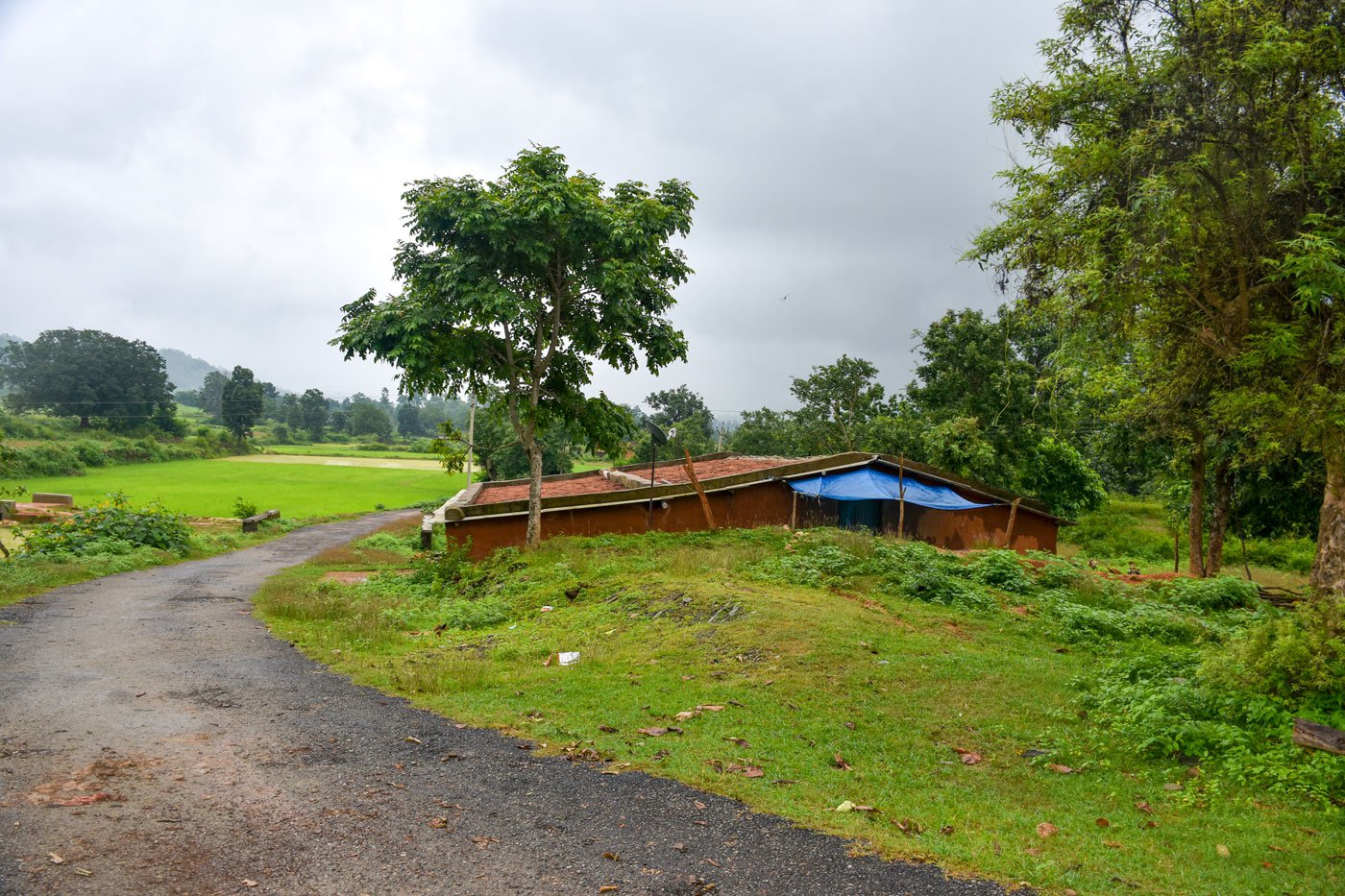
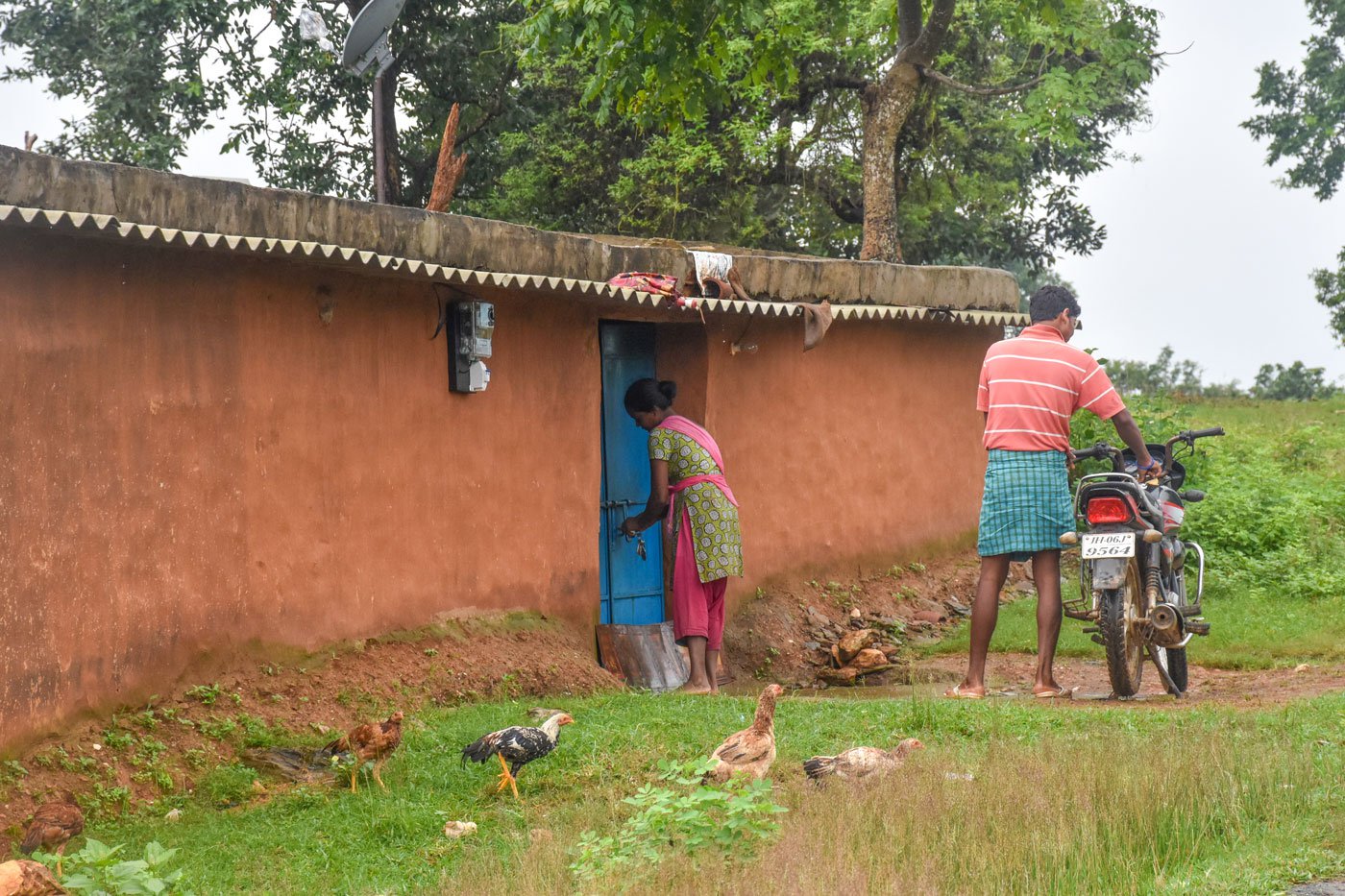
Left: Jyoti’s mud house in Borotika village in Herta panchayat . Right: A villager from Rangamati village has come to fetch Jyoti to attend to a patient
Jyoti works in 16 villages of Herta panchayat , including Borotika, Hututua, Rangamati, Roma, Kandi, Osangi. All are situated within a radius of 12 kilometres. In each case, she has to cover some distance on foot. In addition, she sometimes gets calls from women in villages located in other panchayats , like Rundhikocha and Robkera.
*****
“It was 2009 and I was pregnant with my first child,” Graci Ekka, in her 30s, tells us while talking about how Jyoti helped her during a difficult time. She is speaking to us in her home in Borotika. “The baby was born at midnight. The only woman with me at that time, apart from my old mother-in-law, was Jyoti. I had severe diarrhoea after childbirth and was feeling terribly weak. I had lost consciousness. Jyoti was the one who took care of me all through.”
Graci recalls how in those days there was no transport or proper roads connecting the village. Jyoti relied on local herbs until she could contact Jaranati Hebram, a government nurse, to take Graci to Chaibasa, more than 100 kilometres away. The new mother took a year to get back on her feet. “It was Jyoti who used to take my newborn baby to other lactating women in the village to feed the infant,” she says. “My baby would not have survived without her.”
Graci’s husband, Santosh Kachchhap, 38, says there has been a Primary Health Centre in the village since two years, where a nurse sits once a week. This PHC is about three kilometres away from Jyoti’s house, and it offers no facilities. “The nurse does not stay in the village. She comes and checks people with minor complaints like fever, and then returns. The nurse needs to send a report regularly, but there is no internet facility in the village. So she cannot stay here. Jyoti lives in the village and that is why she is very useful,” he adds. Pregnant women do not visit the PHC. They seek Jyoti’s help to give birth at home.
There are no functioning PHCs in villages across the district even now. The hospital in Goilkera block is 25 kilometres from Borotika, and a recently set up PHC in Anandpur block is about 18 kilometres away. A tiny 12-kilometre path goes from Borotika via Serengda village and stops when it hits the Koel river. In summer, people wade across the low-lying river to reach Anandpur. But during monsoon, the river overflows and the path gets blocked, forcing the people of villages in Herta panchayat to use an alternative route – about 4 kilometres longer – to get to Anandpur. From the river to Anandpur, a rocky mud lane, interspersed with small patches of broken tar road, winds through the forest for about 10 kilometres.
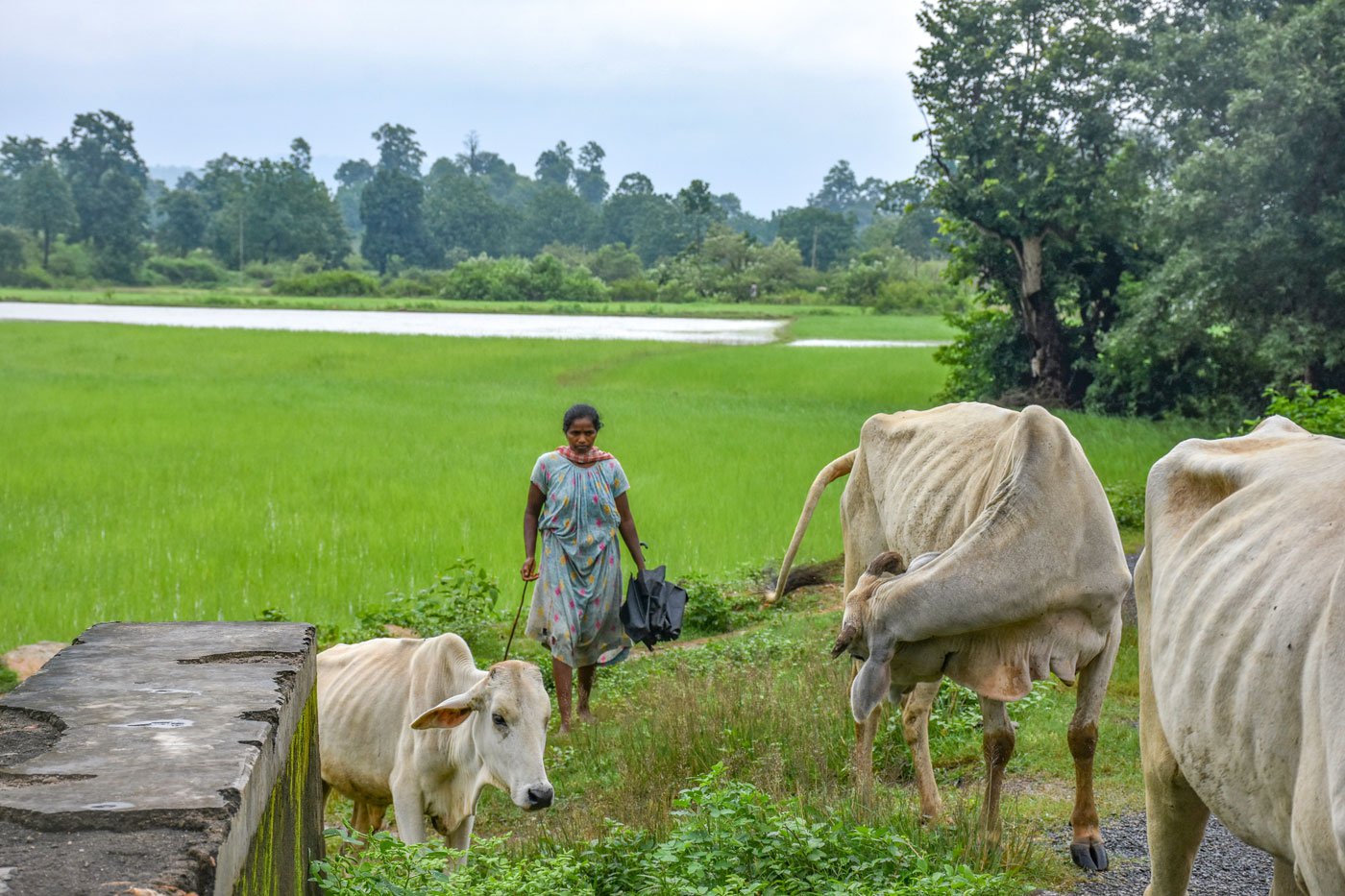
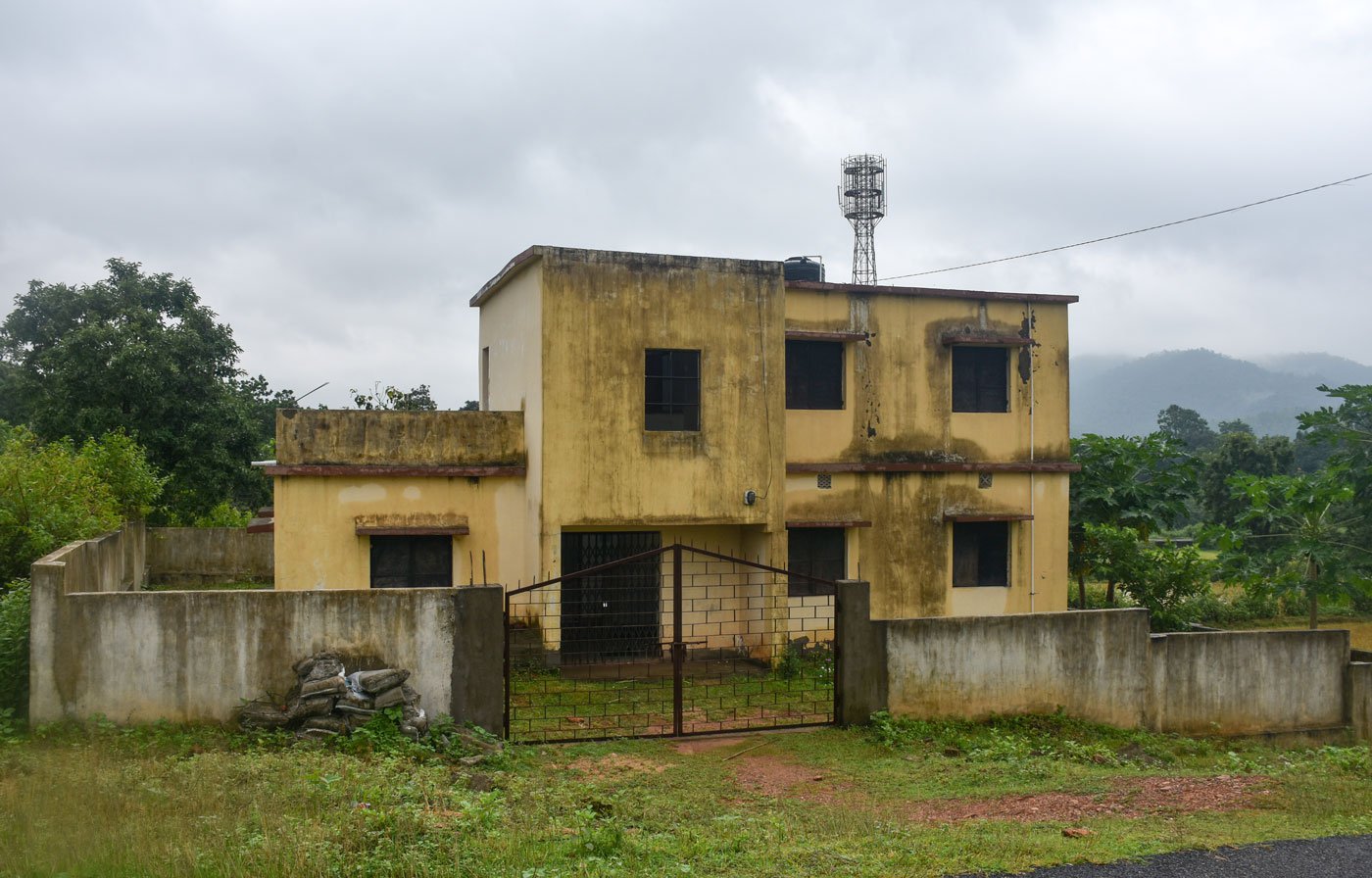
Left: Graci Ekka of Borotika village says, “It was Jyoti who used to take my newborn baby to other lactating women of the village to feed the infant. My baby would not have survived without her." Right: The primary health centre located in Borotika, without any facilities. Government nurses come here once a week
There used to be a bus that carried people all the way to Chakradharpur city, but it stopped after an accident. People rely on cycles and motorbikes, or just walk. It’s a journey often impossible for pregnant women to undertake. And then, only normal births can take place in Anandpur PHC. If the pregnancy is complicated or an operation is required, the women have to go to Manoharpur, a further 15 kilometres from Anandpur, or cross the state border to Rourkela, about 60 kilometres inside Odisha.
“Since childhood I have seen that women are the most helpless when they fall ill,” says Jyoti. “Men go out to earn [in cities and towns]. The towns and hospitals are all very far from the village, and often the condition of the women worsens because they keep waiting for their husbands to return. For many women, it is no help if their husband lives in the village, because men are often drunk and beat their wives even during their pregnancy,” she observes.
“Earlier there was a dai-ma (midwife) in this area. She was the only support for women during childbirth. But someone killed her in a village fair, out of sheer spite. After her, there is no woman in the village with those skills,” says Jyoti.
There is an anganwadi sevika and a sahiya in each village. The sevika keeps records of children in the village, and reviews the health of pregnant women and lactating mothers and their babies. The sahiya helps take pregnant women to the hospital, but the patient has to bear the cost of her food, transport and lodging. People seem to prefer contacting Jyoti rather than the sahiya because Jyoti never charges for home visits separately, but only for medicines.
Even that can be a stretch for families in these villages, who rely on rainfed agriculture and wage labour for an income. Over 80 per cent of Pashchimi Singhbhum’s rural population is engaged in casual or agricultural labour (Census 2011). Men from most of the households migrate to Gujarat, Maharashtra and Karnataka for work.
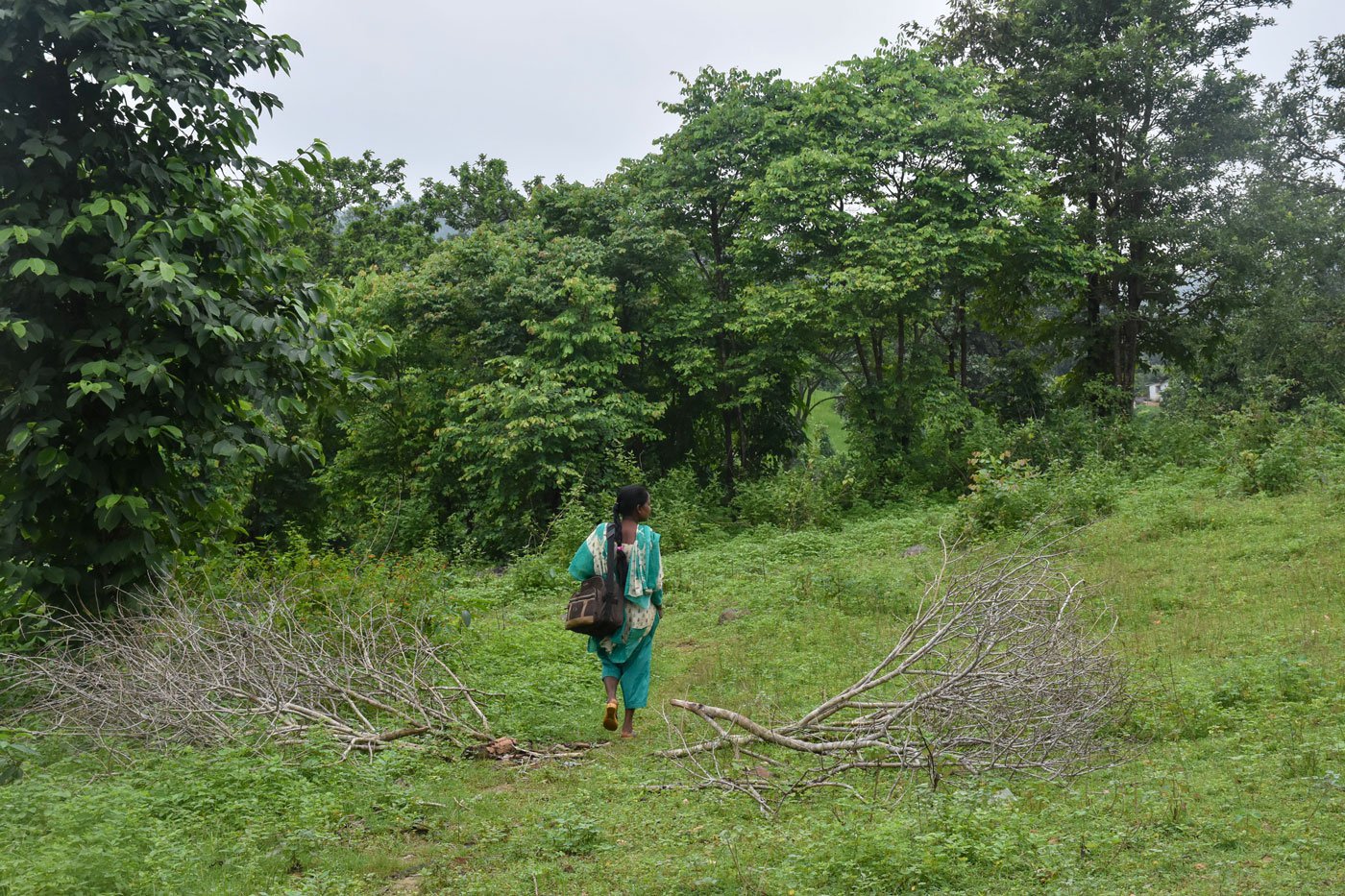

Left: The few roads in these Adivasi villages of Pashchimi Singhbhum are badly maintained. Often the only way to reach another village for Jyoti is by walking there. Right: Jyoti walks to Herta village by crossing a stone path across a stream. During monsoon it is difficult to cross this stream
*****
According to NITI Ayog’s National Multidimensional Poverty Index report, about 64 per cent of people in rural Pashchimi Singhbhum remain ‘multidimensionally poor’ – based on non-monetary indicators of deprivation. The choice here is often between high costs to access free government facilities versus the rather expensive medicines supplied by an RMP, who, like Jyoti, would accept her fees being paid in small instalments over a period of time.
In order to reduce delays, the state government has set up a network of free services to public health facilities – mamta vahans and sahiyas – with call centres in district hospitals. “People can call a phone number for the mamta vahan ,” says Jyoti, about the transport van to take pregnant women to a health facility. “But many times the vehicle driver refuses to operate if he suspects that the pregnant woman’s chances of survival are very poor. This is because the driver becomes the target of people’s ire if a woman dies in his vehicle.”
Jyoti, on the other hand, helps women give birth at home, and charges about Rs. 5,000 for the support she provides. She charges Rs. 700-800 for administering a saline bottle, which is sold at Rs. 30 in the market. The malaria treatment can cost a minimum of Rs. 250 without a drip, the pneumonia medication between Rs. 500-600, and treatment for jaundice or typhoid, Rs. 2,000-3,000. In a month, Jyoti gets about Rs. 20,000 in hand, half of which, she says, goes towards buying medicines.
A report published by Pratichi (India) Trust in 2005 observes the presence of a worrying nexus in rural India between private medical practitioners and pharmaceutical companies. “When the PHCs and other public health service units suffer from acute shortages of drugs, this gigantic private drug market – often using and promoting unethical practices by doctors – siphons out this amount from the common people mainly because of the absence of a regulatory mechanism,” the report notes.
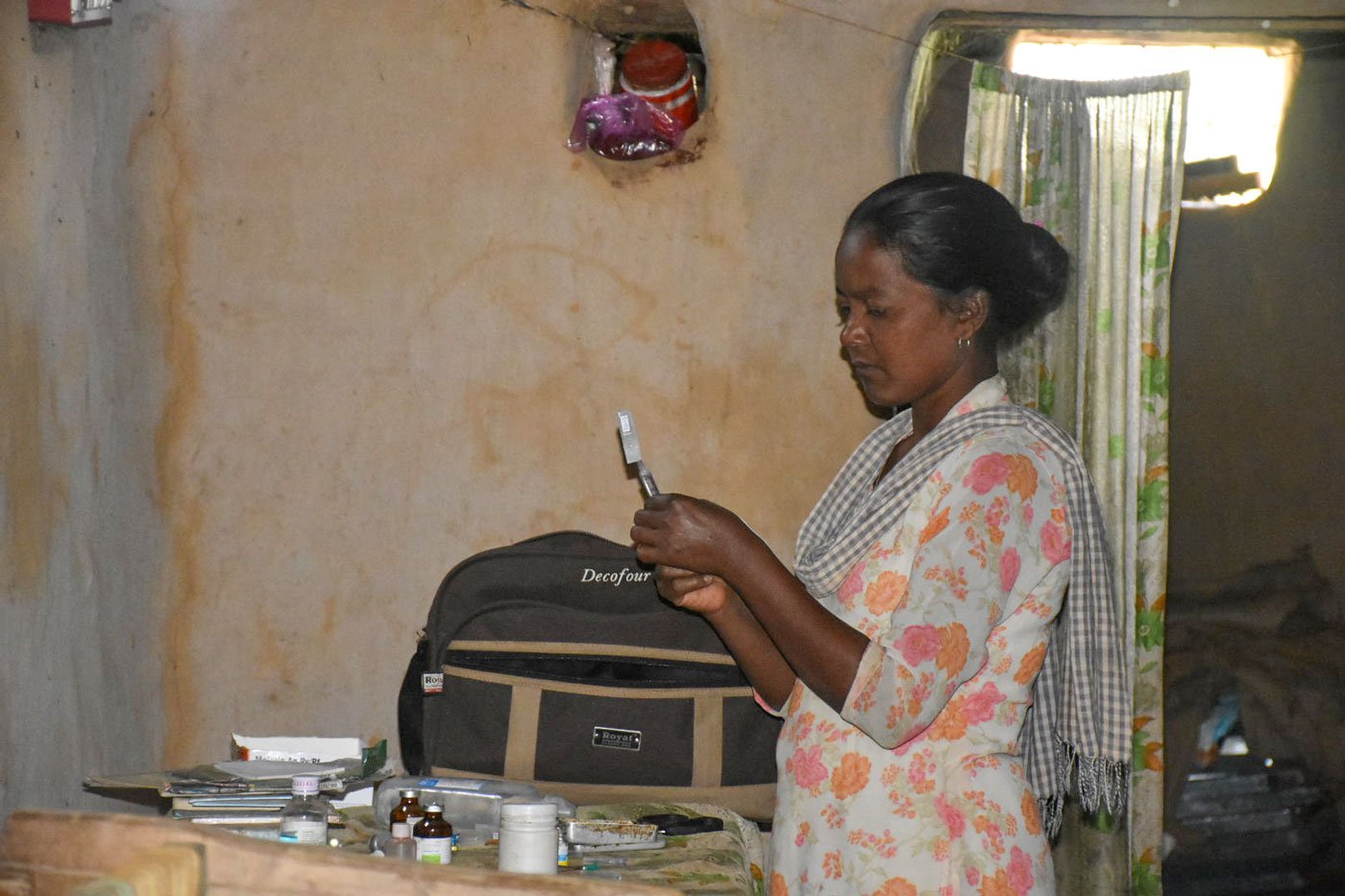
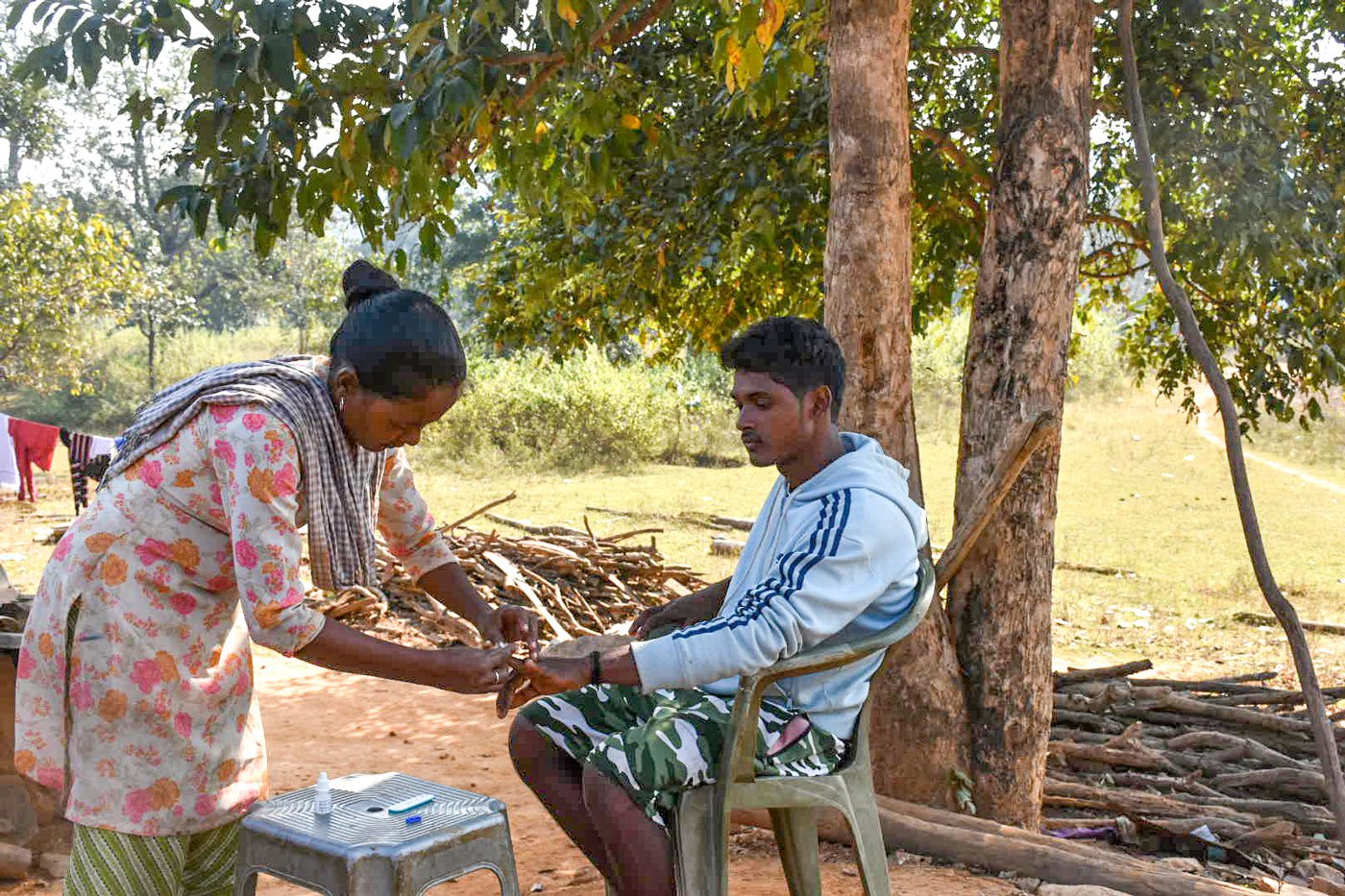
Left: Jyoti preparing an injection to be given to a patient inside her work area at home. Right: Administering a rapid malaria test on a patient
A health review of the state commissioned by the chief minister of Jharkhand in 2020 gave a dismal picture of the state’s healthcare system in terms of access and delivery. It showed a shortfall of 3,130 health sub-centres, 769 primary health centres, and 87 community health centres, going by Indian Public Health Standards on the basis of Census 2011. The state has only 6 doctors, 27 beds, 1 lab technician and around 3 nurses for every lakh of population. Also, 85 per cent of its specialist doctor posts are lying vacant.
The situation seems not to have changed since a decade ago. The Jharkhand Economic Survey 2013-14 had noted a shortfall of over 65 per cent in the number of PHCs, 35 per cent in sub-centres and 22 per cent in CHCs. The lack of specialist medical officers is one of the most alarming issues, the report said. Over 80 to 90 per cent deficit was noted among obstetricians, gynaecologists and paediatricians at CHCs, it confirmed.
Even today, a quarter of the state’s population lacks access to institutional deliveries, and there are 5,258 fewer doctors than needed. In this state of 3.29 crore people (Census 2011), there are only 2,306 doctors across all public health facilities.
RMPs are a vital part in the context of such an inequitable healthcare delivery system. Jyoti handles home births and post-delivery care, and provides iron and vitamin supplements to pregnant women. She handles big and small cases of infections and minor injuries, and also gives urgent medical attention and even critical care. In complicated cases, she recommends the patient to a government hospital and even arranges for transport or puts them in touch with a government nurse.
*****
Virendra Singh, a member of the Jharkhand Rural Medical Practitioners Association, estimates there are 10,000 RMPs practicing in Pashchimi Singhbhum alone. Of these 700 are women. “New PHCs like the one in Anandpur have no doctors,” he says. “The whole place is run by nurses. It is RMPs like Jyoti who take care of their villages but get no cooperation from the government. But they understand the people in the area because they stay with them. They are connected with the public. How can you ignore their work?” he asks.
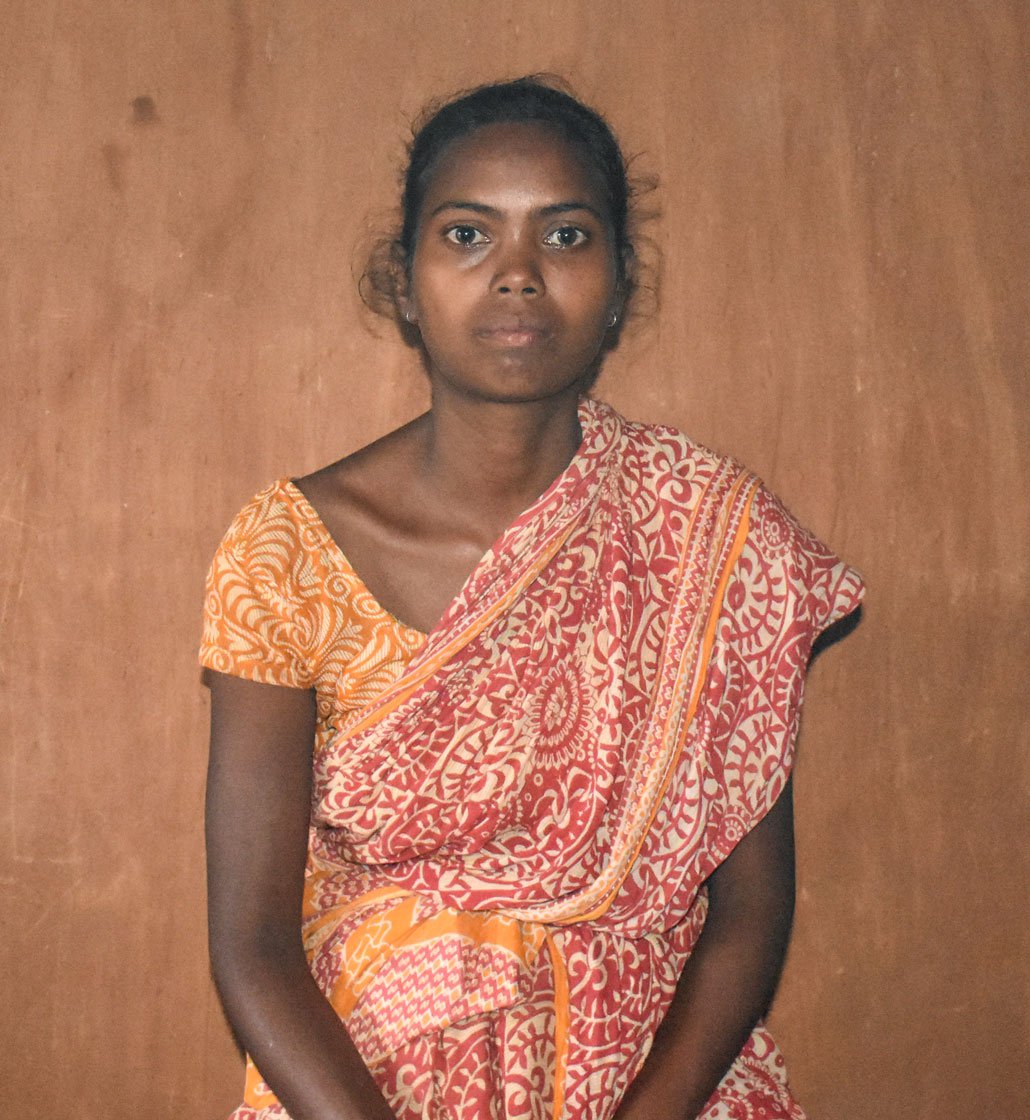
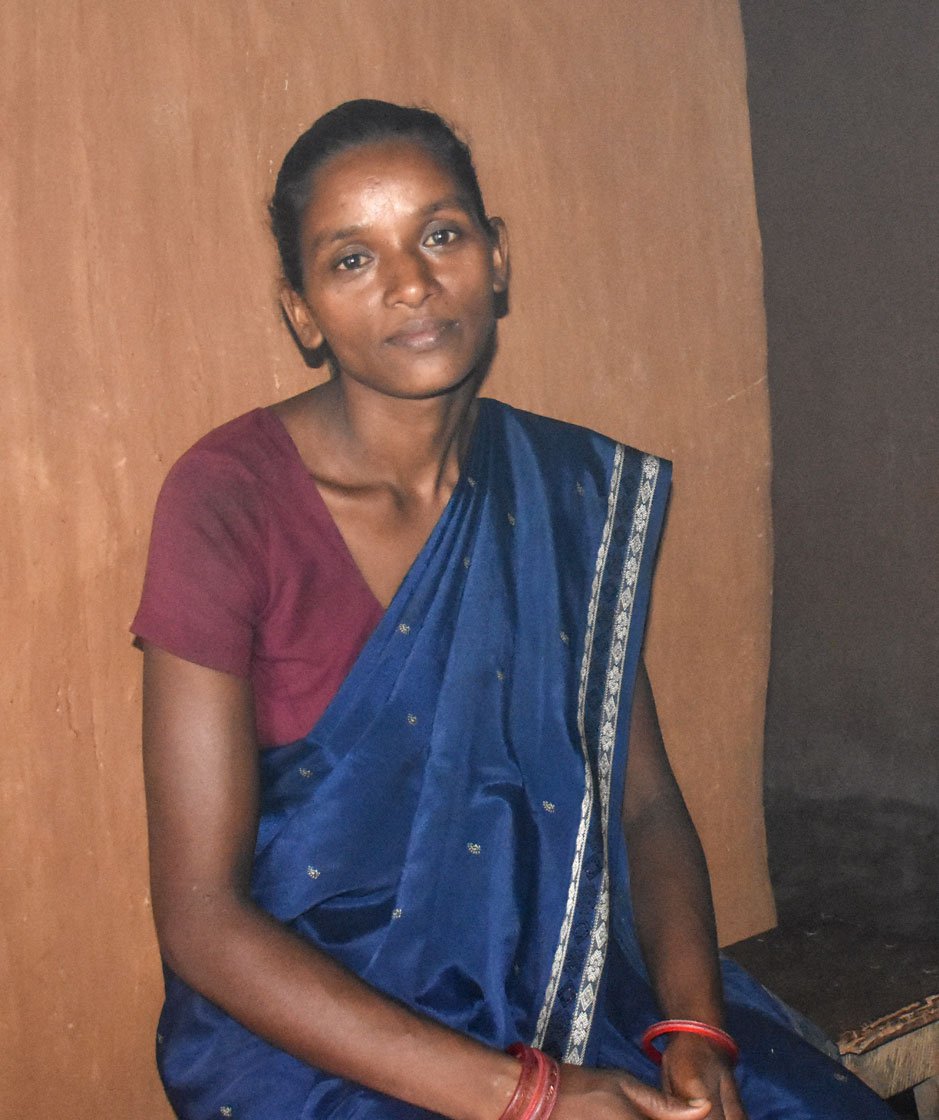

Left: Susari Toppo of Herta village says, “I had severe pain in my stomach and was bleeding. We immediately called Jyoti." Centre: Elsiba Toppo says, "Jyoti reaches even far-off places in the middle of the night to help us women." Right: The PHC in Anandpur block
Susari Toppo, 30, of Herta village, says that when she was pregnant with her first child in 2013, the baby had stopped moving in her stomach. “I had severe pain in my stomach and was bleeding. We immediately called Jyoti. She stayed with us the whole night and the next day. In those two days, she administered six saline bottles, three a day. Finally, I had a normal delivery.” The baby weighed a healthy 3.5 kilos. Jyoti was to be paid Rs. 5,500 but the family had only Rs. 3,000 with them then. She agreed to accept the remaining amount later, says Susari.
In Herta, Elisaba Toppo, in her 30s, recounts her experience from about three years ago. “I was pregnant with twins then. My husband was completely drunk as usual. I did not want to go to the hospital because I knew the roads were bad,” she says. Even to reach the main road, some four kilometres away from the house, one has to walk across fields and open drains, she adds.
Elisaba’s pain started at night, when she had gone near the fields to relieve herself. When she returned home after half an hour, her mother-in-law massaged her, but the pain continued. “We called for Jyoti then. She came, gave me medicines, and it was because of her that the birth of my twins was by normal delivery at home. She reaches even far-off places in the middle of the night to help us women,” she says.
RMPs are known to administer intravenous fluids indiscriminately. The Pratichi report noted the use of IV solution, popularly known as ‘saline’, for almost every sort of ailment by RMPs in Jharkhand in Bihar. The study observed that it was not only unnecessary and expensive but also counterproductive in many cases. “The interviewed ‘practitioners’ strongly maintained that no treatment could be done without saline, since ‘saline increases blood in the body, gives nutrition and faster relief,’” the report quoted.
Hers is a risky job, but Jyoti has been lucky. She claims she has not had a failure in her 15-year-long practice. “If I ever have a doubt about handling the case, I always send the patient to the Manoharpur block hospital. Or I help them call the mamta vahan, or connect them to a government nurse,” she says.
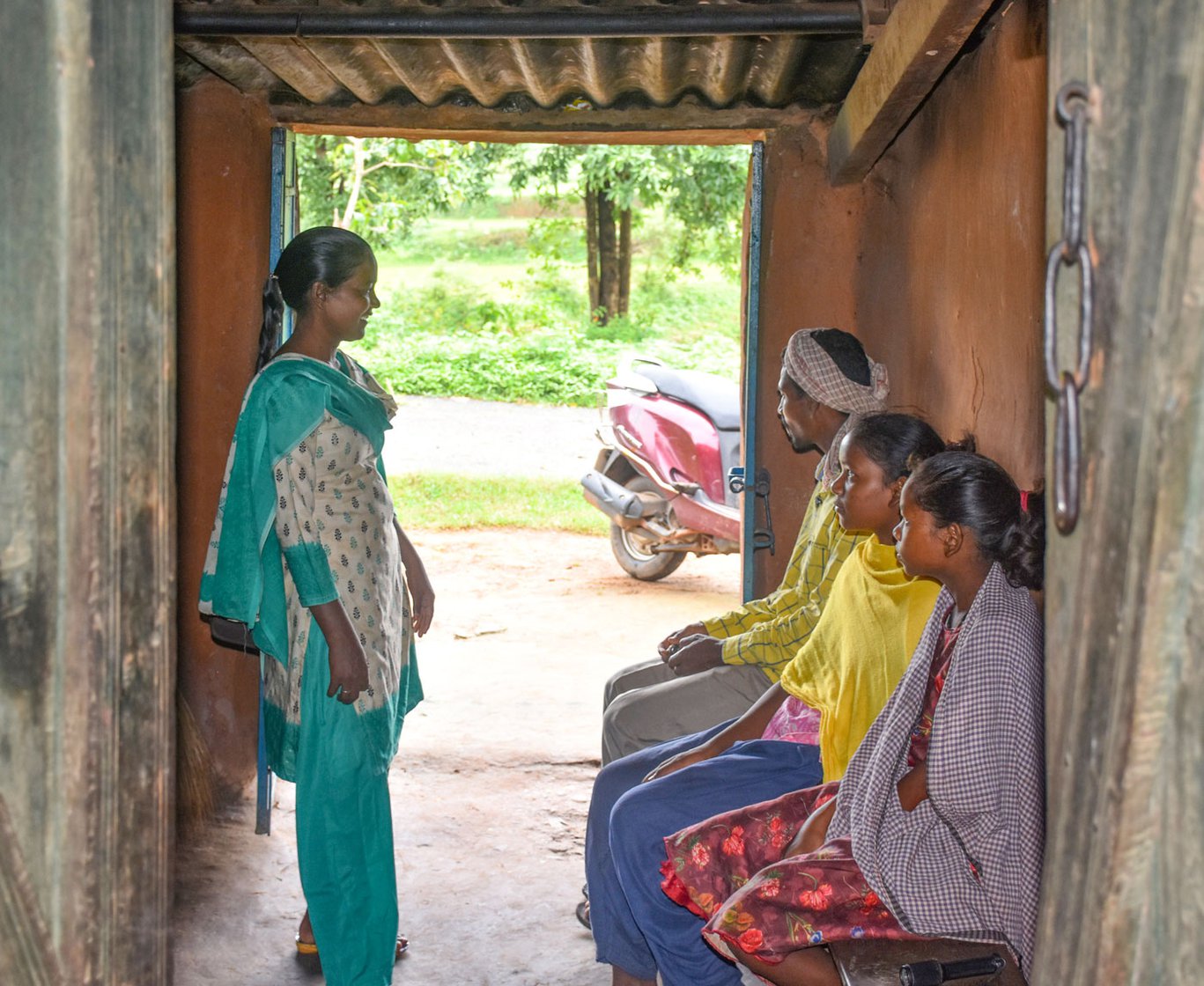
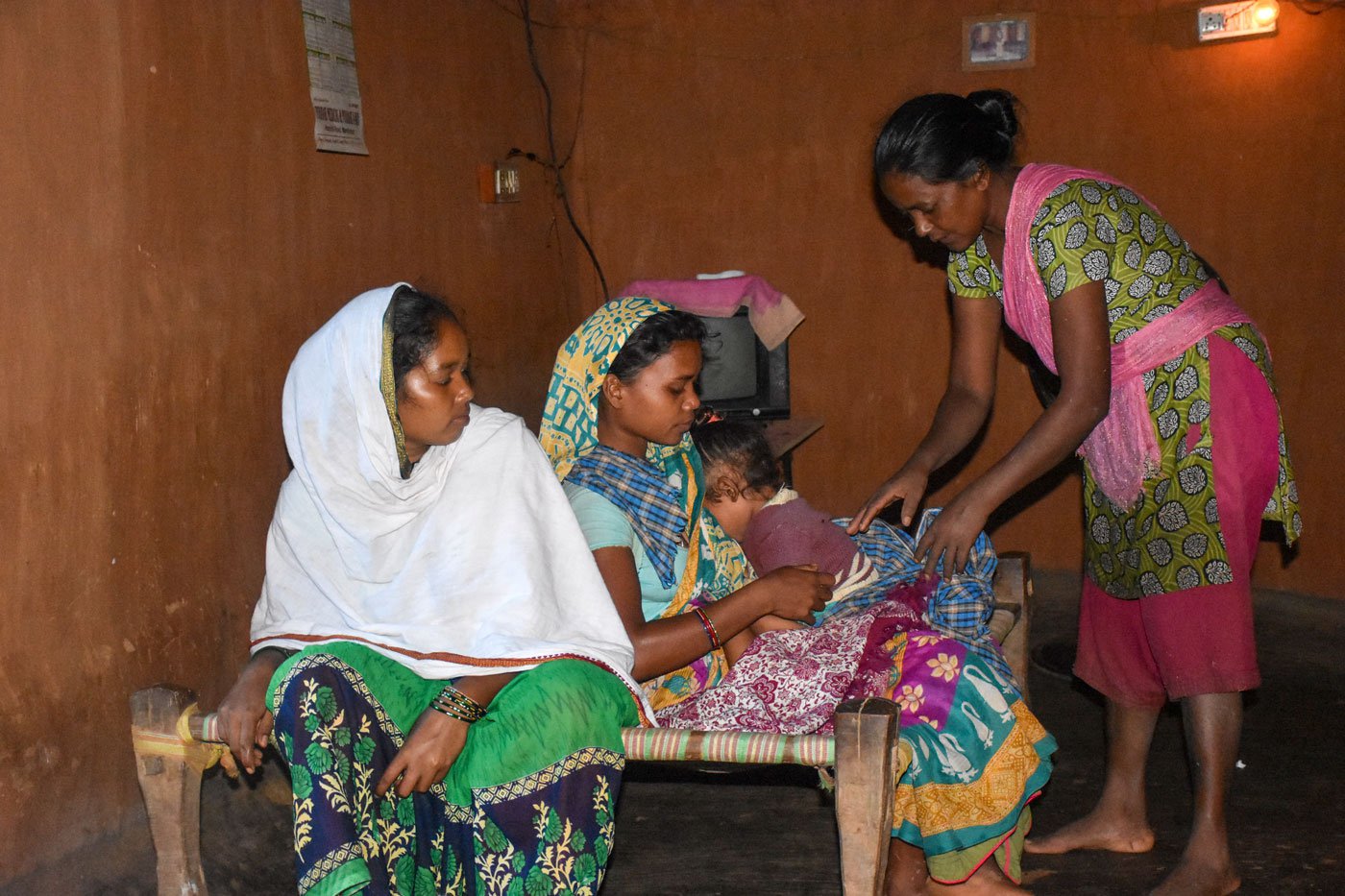
Left: Jyoti seeing patients at her home in Borotika. Right: Giving an antimalarial injection to a child
Jyoti has acquired her skills through sheer determination. Her father died when she was in Class 6 in a government school in Serengda. It meant a major break in her schooling. “A woman returning from the city in those days, took me to Patna under the pretext of giving me work and left me with a doctor couple. I was made to sweep and clean the house. One day, I ran off from there and returned to the village,” Jyoti recalls.
Later, she resumed her education, at a convent school in Charbandia village of Anandpur block. “It was there, while watching the nuns working in the dispensary, that I first understood the satisfaction and joys of nursing,” she says. “I could not study beyond that. My brother somehow arranged for 10,000 rupees and I did a course – Rural Medical Practitioner in allopathic medicine – from a private institution.” In addition, she received a certificate from the Jharkhand Rural Medical Practitioners Association. It is after assisting doctors in different private hospitals in Kiriburu, Chaibasa and Gumla for two to three months each, that she returned to her village to start her own practice.
The government nurse who works in Herta panchayat , Jaranati Hebram, says: “It is very difficult to work in the area when you come from outside. Jyoti Prabha practices in the village and so the people are helped.”
“The government nurses do visit the village once a month,” says Jyoti. “But people don’t go to them for treatment because they don’t trust them. The people here are not educated. So trust and behaviour are more compelling factors for them, much more than medicines.”
PARI and CounterMedia Trust's nationwide reporting project on adolescent girls and young women in rural India is part of a Population Foundation of India-supported initiative to explore the situation of these vital yet marginalised groups, through the voices and lived experience of ordinary people.
Want to republish this article? Please write to [email protected] with a cc to [email protected] .
